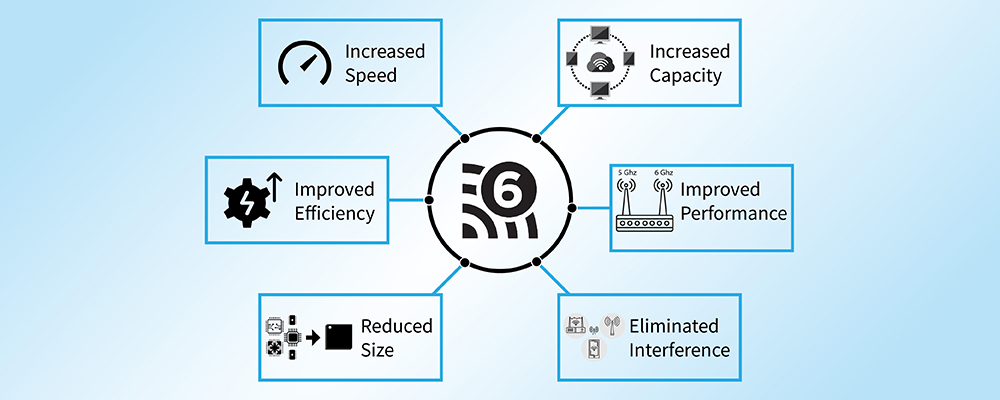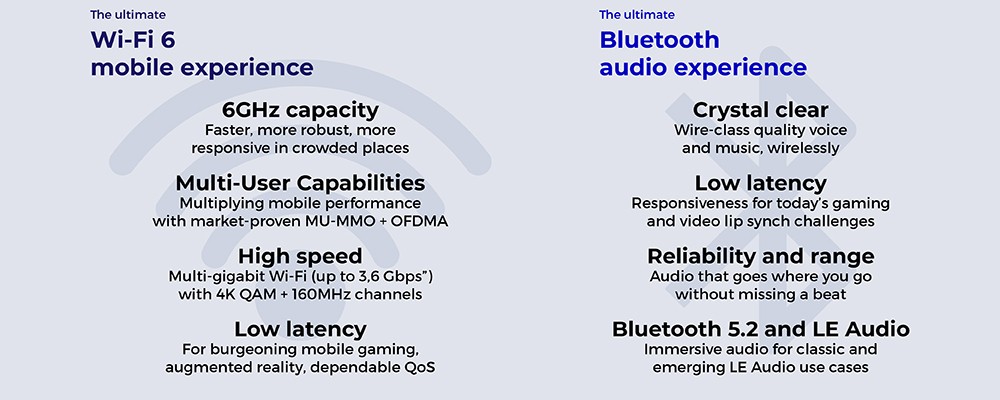BLOG
Latest Tech
News

July 18, 2022
WiFi 6E - What it is & Why you need it?
Wi-Fi 6E: Faster Speed, Lower Latency and Higher Capacity
Today we’ll talk about what WiFi 6e is, how it’s different from WiFi 6 and what are its benefits. So, firstly, what’s up with the name?
The WiFi 6 and the WiFi 6e are called that because of a collective effort by the WiFi alliance, the industry body that tests and certifies WiFi products to help people understand the different WiFi standards. So, WiFi 6 is the name for the new 802.11 ax standard.
WiFi 6 vs. WiFi 6e
WiFi 6e is WiFi 6, but the e basically stands for extension, so it's extending WiFi 6 into the 6 GHz frequency band.
6 GHz is the new frequency band ranging from 5.925 GHz to 7.125 GHz, allowing up to 1,200 MHz of additional spectrum. Unlike the existing bands on which channels are currently crammed into the limited spectrum, the 6 GHz band exists without overlap or interference. Access to the 6 GHz frequency brings more bandwidth, faster speeds, and lower latency, opening up resources for future innovations like AR/VR, 8K streaming, and more.
In a nutshell, Wi-Fi 6E enables faster speeds and lower latencies than Wi-Fi 6 and earlier iterations. Unlike the 2.4 GHz and 5 GHz bands, the wide-open 6 GHz spectrum is occupied only by efficient WiFi 6 connections, removing frustrations currently caused by overcrowding on many WiFi networks. Wi-Fi 6E will open up hundreds of channels, versus the 24 available now, increasing throughput tremendously.
Not all WiFi 6-compatible devices will be able to support using the 6GHz band. At this point, what you need to know is that if you are still in the process of upgrading to new devices or have recently upgraded to new devices, you will want to check to see if they are distinguished as WiFi 6E devices.
Wi-Fi 6E Q&A
How Does Wi-Fi 6E Work?
6 GHz is the new frequency band ranging from 5.925 GHz to 7.125 GHz, allowing up to 1,200 MHz of additional spectrum. Unlike the existing bands on which channels are currently crammed into the limited spectrum, the 6 GHz band exists without overlap or interference. Access to the 6 GHz frequency brings more bandwidth, faster speeds, and lower latency, opening up resources for future innovations like AR/VR, 8K streaming, and more. On the other hand, in Europe there will be only 480 MHz 5945 - 6425 MHz.
In Europe, 6E Wi-Fi networks will provide increased capacity by operating on the 6 GHz band with 24 channels of 20Mhz, 12 of 40 Mhz, 6 channels of 80Mhz 3 of 160 MHz.
Why do you need WiFi 6E?
Because of the demand to connect more devices to the network, which increases network traffic.
How will WiFi 6E impact the WiFi user experience?
Using wider channels and increased spectrum, Wi-Fi 6E can support multiple simultaneous users that connect to the network at high speeds with lower latency.
Is it worth upgrading to Wi-Fi 6E?
As 6GHz customers reach the market, high-density environments will benefit significantly from switching to a 6E Wi-Fi network. Combining the available spectrum of Wi-Fi 6E, enhanced 802.11ax (Wi-Fi 6) features, and AI Juniper solutions to automate and optimize your network will increase your network performance and user experience.


